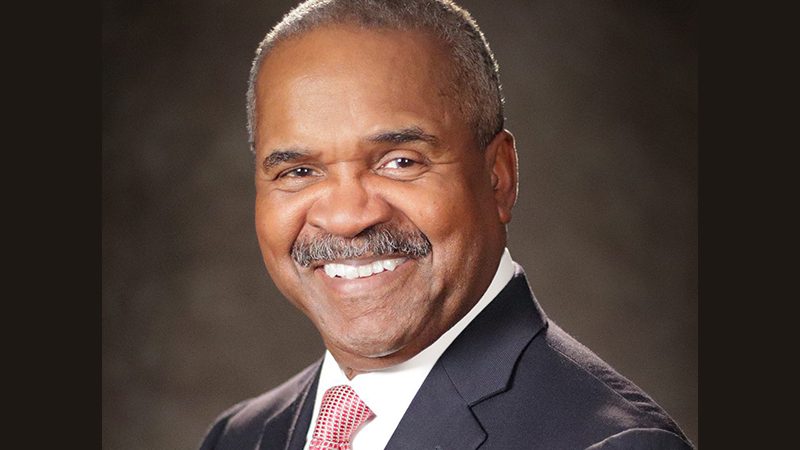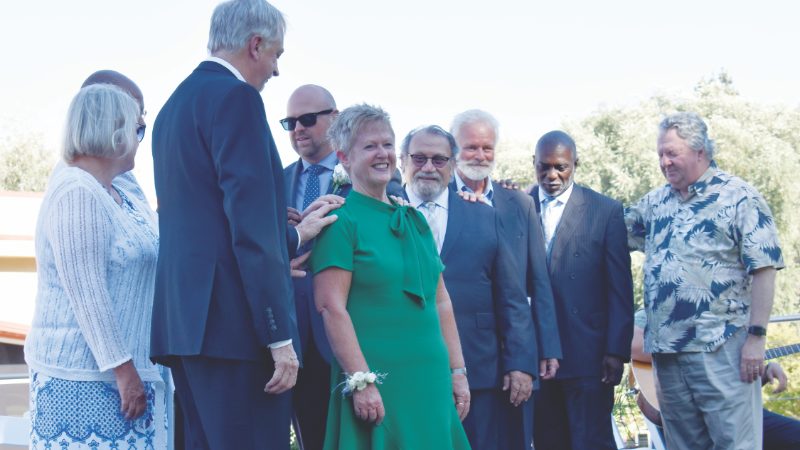Pacific Union College Flight Center director Nathan Tasker had the idea to build a type-specific aircraft simulator for his students. Since flight training devices in general aviation tend to be generic, limiting their usefulness, Tasker questioned how he and the program could obtain a simulator to teach basic skills, such as visual ground reference maneuvers and landing techniques. This would allow students to progress efficiently, as these skills cannot be effectively taught in traditional simulators.

He shared his dream with the former chair of PUC’s technology department, Russell Laird, who would help bring this idea to life. Building the simulator started last summer, with dimensions mirroring PUC’s Piper Cherokee cockpit. Aviation major Micah Dymer drew an instrument panel that Laird would build and design with other aviation students who had volunteered to assemble parts and help calibrate the controls. From Hong Kong to Indonesia to Germany and Sacramento, different parts arrived in Angwin to build the simulator.
According to Tasker, building a type-specific flight simulator for a small aircraft had not been done before. This process took countless hours of experimenting, ongoing improvements, and adjustments. With no manual and starting from scratch, Tasker and his team find it very rewarding to see the simulator running this quarter.
“We have an amazing group of students this year!” said Tasker. “They are creative and willing to jump in and help. They are very engaged and excited to get involved. I am confident these students will go far. When we place the well-being of our neighbors ahead of ourselves, I believe these pilots will ignite a collective passion to go out and serve in a way that can literally change our world for the betterment of humanity.”
With the success of this first flight simulator, they plan to build a full-motion platform and expand their fleet with a new full-motion simulator. Aviation enthusiasts are invited to join them for their Air Expo on Sunday, May 4.
____________________
By Ally Romanes
Un sueño hecho realidad: PUC Flight Center instala simulador personalizado
El director del PUC Flight Center, Nathan Tasker, tuvo la idea de construir un simulador de avión de tipo específico para sus estudiantes. Dado que los dispositivos de entrenamiento de vuelo en la aviación general tienden a ser genéricos, lo que limita su utilidad, Tasker cuestionó cómo él y el programa podrían obtener un simulador para enseñar habilidades básicas, como maniobras de referencia visual en tierra y técnicas de aterrizaje. Eso permitiría a los estudiantes progresar de manera eficiente, ya que esas habilidades no se pueden enseñar de manera efectiva en los simuladores tradicionales.

Compartió su sueño con el expresidente del departamento de tecnología de PUC, Russell Laird, quien ayudaría a dar vida a esa idea. La construcción del simulador comenzó el verano pasado, con dimensiones similares a las de la cabina del Piper Cherokee de PUC. El estudiante de aviación Micah Dymer dibujó un panel de instrumentos que Laird construiría y diseñaría con otros estudiantes de aviación que se habían ofrecido como voluntarios para ensamblar piezas y ayudar a calibrar los controles. Desde Hong Kong hasta Indonesia, pasando por Alemania y Sacramento, diferentes piezas llegaron a Angwin para construir el simulador.
Según Tasker, la construcción de un simulador de vuelo específico para un avión pequeño no se había hecho antes. Ese proceso requirió innumerables horas de experimentación, mejoras continuas y ajustes. Sin manual y empezando desde cero, a Tasker y a su equipo les resulta muy gratificante ver el simulador funcionando este trimestre.
«¡Tenemos un grupo increíble de estudiantes este año!», dijo Tasker. «Son creativos y están dispuestos a participar y ayudar. Están muy comprometidos y emocionados de participar. Estoy seguro de que estos estudiantes llegarán lejos. Cuando ponemos el bienestar de nuestros vecinos por delante de nosotros mismos, creo que estos pilotos encenderán una pasión colectiva por salir y servir de una manera que literalmente pueda cambiar nuestro mundo para el mejoramiento de la humanidad».
Con el éxito de ese primer simulador de vuelo, planean construir una plataforma de movimiento completo y expandir su flota con un nuevo simulador de movimiento completo. Los entusiastas de la aviación están invitados a unirse a ellos para su Air Expo el domingo 4 de mayo.
____________________
Por Ally Romanes







